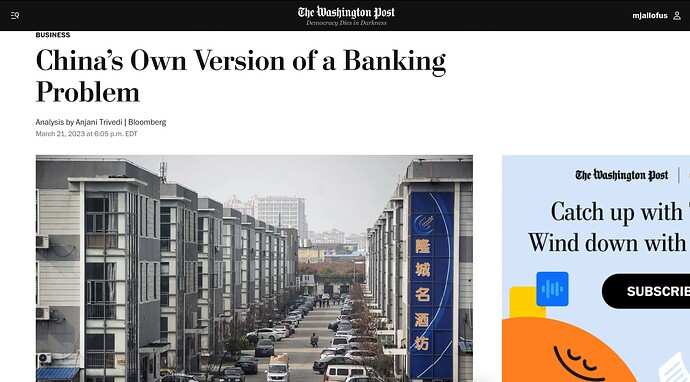-
中国的中小企业对该国的制造业和工业综合体至关重要,占国内生产总值的60%左右,占出口的很大一部分。
-
尽管习近平主席承诺采取支持中小企业的措施,但这些公司仍然陷于低迷,截至2023年2月,衡量当前业绩的指标接近多年来的低点。
-
中小企业在进入大流行病时已经很脆弱,大约85%的企业没有足够的现金在Covid-19措施的高峰期度过三个月的停产期。
-
为了保持生产线运转并满足习近平的指示,对企业的贷款正在以一年半以来最快的速度增长,超过了对家庭的贷款。
-
通常为中小企业服务的较小的地区贷款机构的增长速度几乎与倾向于为大企业服务的较大的国有同行一样,但它们的治理和优先事项并不总是以信贷风险为重点。
-
最弱的小公司再次转向影子银行,风险较大的贷款在增长,委托债务的存量也在增加,这是一种令人担忧的陋习回归。
-
小型银行,如城市和农村商业贷款机构的资本缓冲很弱,限制了它们处理小公司问题贷款的能力。
-
北京在2023年2月出台了严格的措施草案,以帮助贷款人按风险类型和业务规模对资产进行分类,但对小型银行的系统性修复和根除腐败的工作还没有发生。
-
北京希望在2023年底前催生15万家 "创新 "小企业和超过1万家 “小巨人”,但如果没有痛苦和外科手术式的改革,新公司将很难起步,老公司也很难生存。
-
Small and medium enterprises (SMEs) in China are crucial to the country’s manufacturing and industrial complex, accounting for around 60% of gross domestic product and a significant chunk of exports.
-
Despite measures promised by President Xi Jinping to support SMEs, these companies remain stuck in the doldrums, with a gauge of current performance close to multiyear lows as of February 2023.
-
SMEs were already weak going into the pandemic, and around 85% of businesses did not have enough cash to survive a three-month shutdown at the height of Covid-19 measures.
-
To keep production lines running and meet Xi’s directive, loans to companies are rising at the quickest rate in over a year and a half, outpacing those to households.
-
Smaller regional lenders, which typically serve SMEs, are growing almost as fast as larger, state-owned peers that tend to serve big enterprises, but their governance and priorities are not always focused on credit risk.
-
The weakest small companies are turning to shadow banking once again, with riskier loans growing, and the stock of entrusted debt increasing, a worrying return to bad habits.
-
The capital buffers of smaller banks, such as city and rural commercial lenders, are weak, limiting their ability to deal with troubled loans from small companies.
-
Beijing put out stringent draft measures in February 2023 to help lenders classify assets by type of risk and size of business, but systemic fixes for smaller banks and rooting out the rot have not happened yet.
-
Beijing hopes to spawn 150,000 “innovate” small enterprises and over 10,000 “little giants” by the end of 2023, but without painful and surgical changes, it will be hard for new firms to get off the ground and for old ones to survive.
